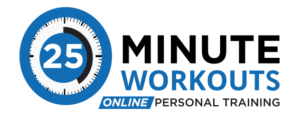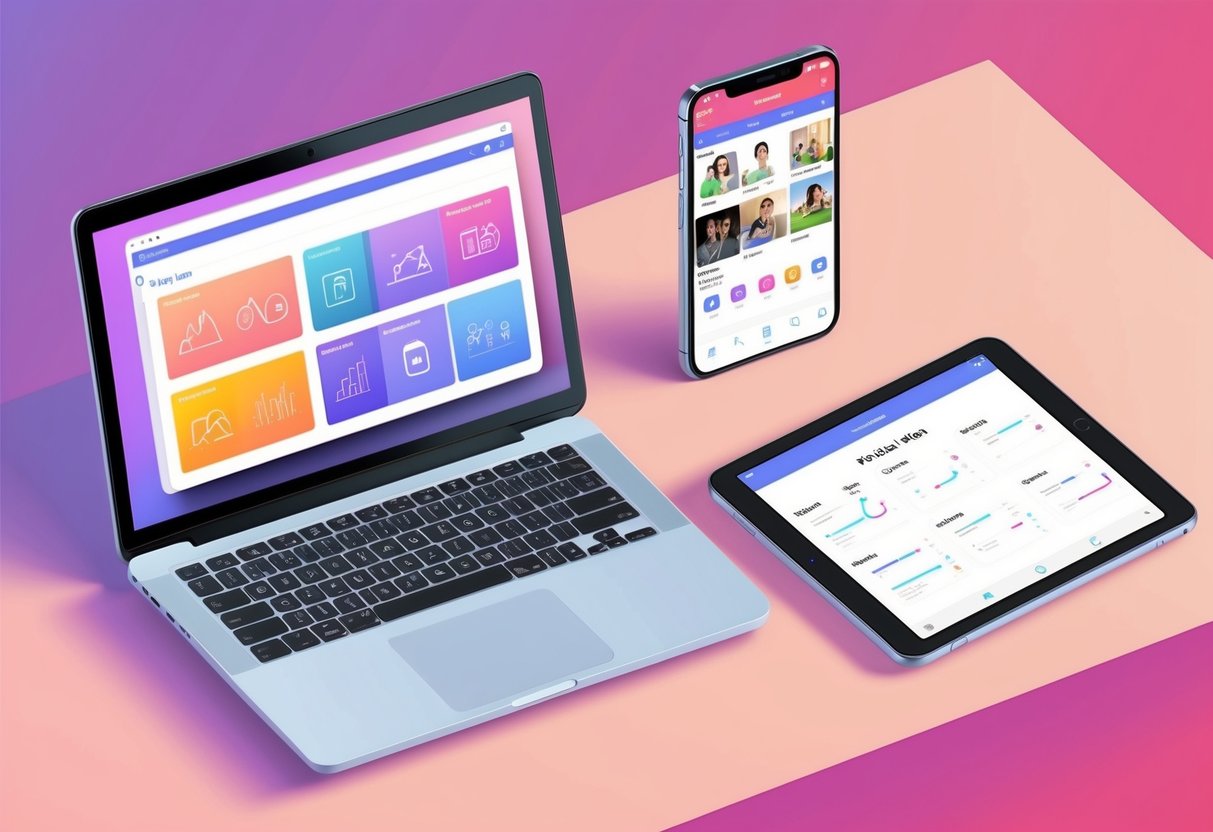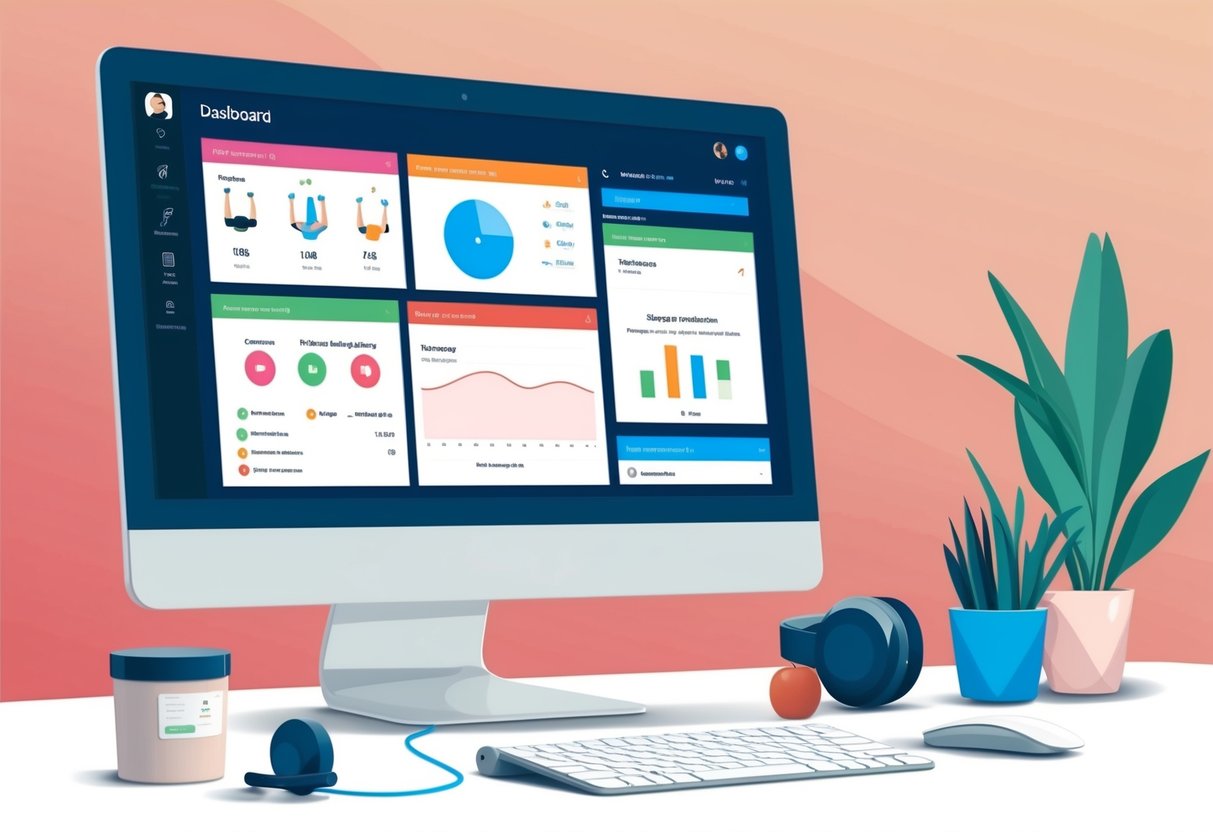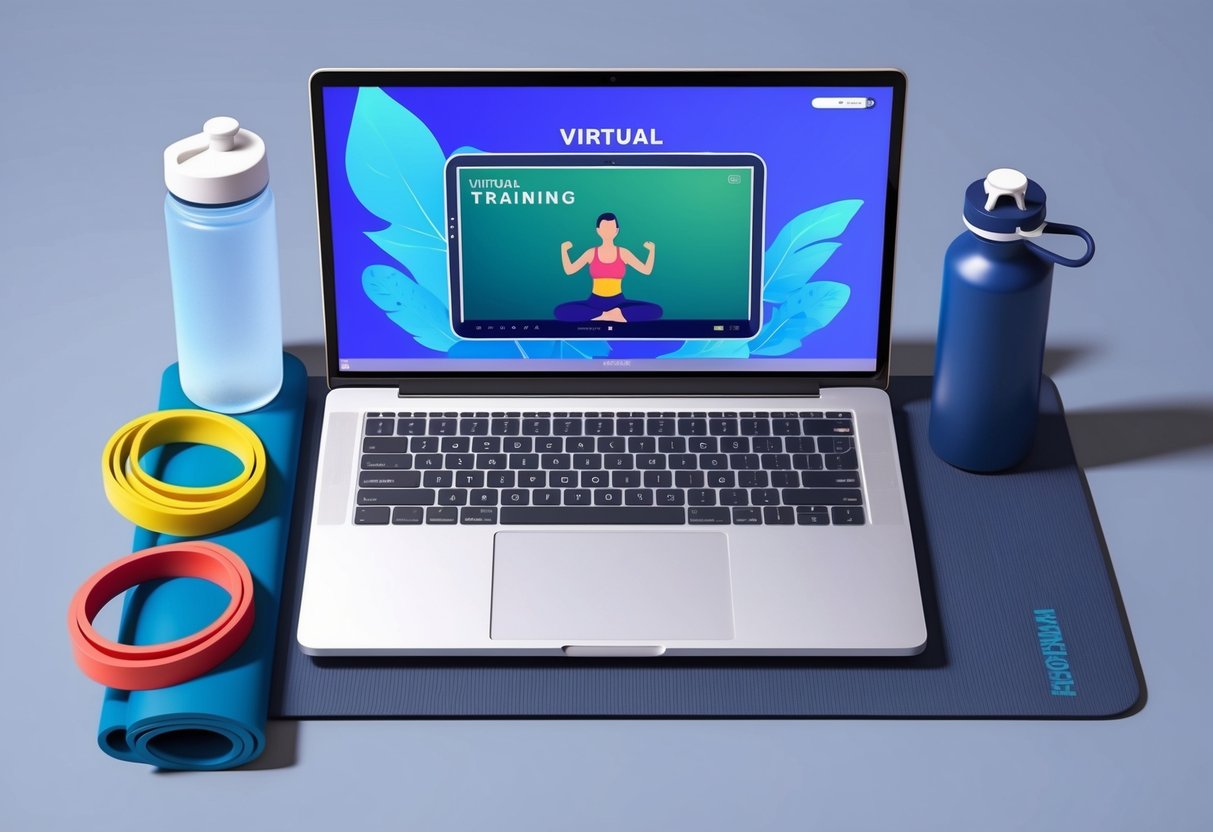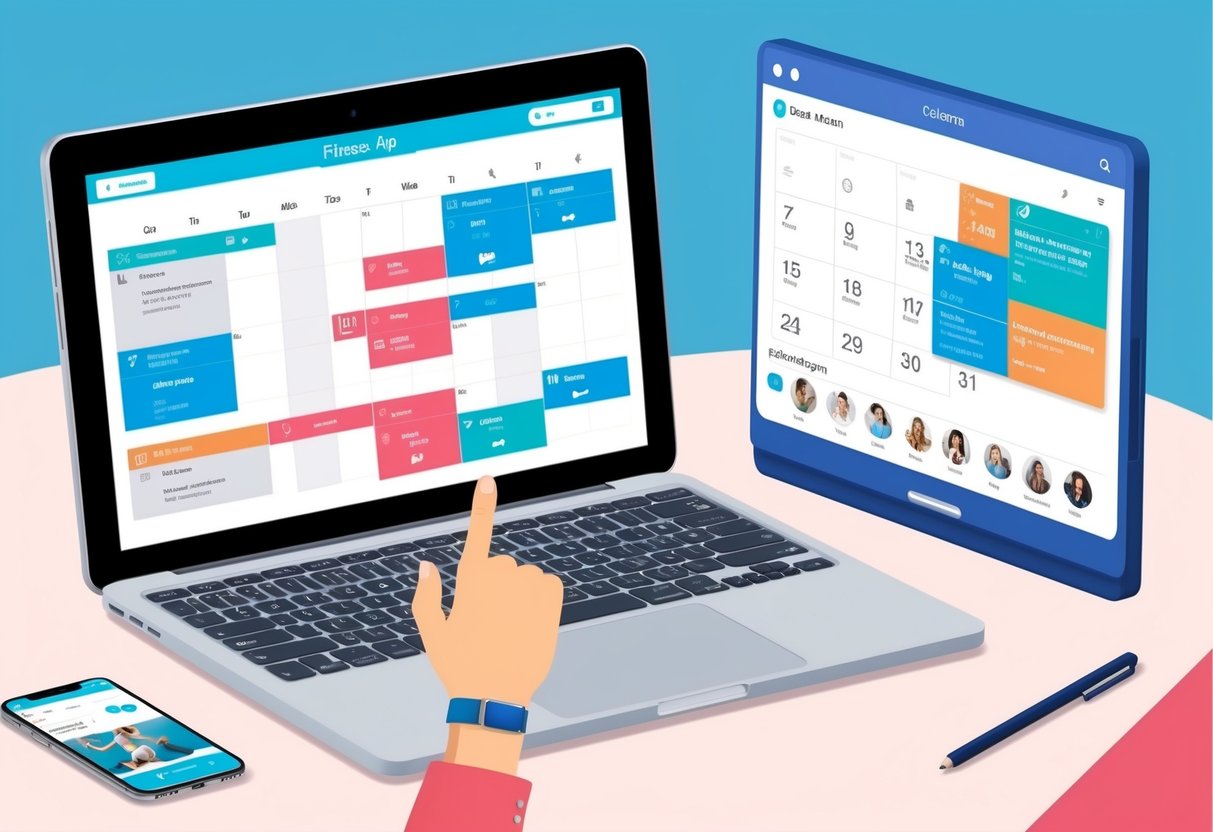Online personal training has revolutionized the fitness industry, allowing trainers to reach clients globally. This flexible approach offers convenience and personalized guidance to individuals seeking to improve their health and fitness.

Effective online personal training requires the right tools to deliver high-quality services and maintain client engagement. By leveraging technology, trainers can create comprehensive programs, track progress, and provide support to clients remotely.
Choosing the right tools can streamline your workflow, enhance client satisfaction, and boost your online training business.
Let’s explore three essential tools that can elevate your online personal training services and help you stand out in the competitive digital fitness landscape.
Popular Posts
- Massage Gun vs. Foam Roller: Which Recovery Tool Reigns Supreme?
- 27 Best Calisthenics Exercises for Full-Body Strength and Fitness
- 10 HIIT Workouts for Busy Professionals: Max Fitness, Min Time
- Good Posture Working from Home: Optimize Your Workspace to Prevent Discomfort and Health Issues
- The Best Crossfit Exercises for Full-Body Conditioning
Key Takeaways
- Essential tools enhance client engagement and program delivery in online personal training
- The right software streamlines workflows and improves training effectiveness
- Leveraging technology can expand your reach and boost your online training business
Establishing Your Online Presence
Creating a strong digital presence is crucial for success as an online personal trainer. A well-crafted online identity helps attract clients and showcases your expertise.
Branding and Unique Value Proposition
Develop a clear brand identity that sets you apart from other trainers. Define your niche and target audience. What makes your training approach unique?
Create a catchy tagline and logo that reflect your personality and training philosophy. Use consistent colors and fonts across all platforms to build brand recognition.
Consider your unique selling points. Do you specialize in weight loss, strength training, or post-pregnancy fitness? Highlight these specialties in your branding materials.
Website and Marketing Tools
Build a professional website to serve as your digital hub. Include essential pages like services, about, testimonials, and contact information.
Invest in user-friendly platforms like Wix or Squarespace for easy website creation. Ensure your site is mobile-responsive for clients on the go.
Utilize marketing tools to grow your business:
- Email marketing software (e.g., Mailchimp)
- Scheduling apps (e.g., Calendly)
- Client management systems (e.g., TrueCoach)
Create engaging content using design tools like Canva. Develop eye-catching graphics, workout plans, and nutrition guides to share with clients and prospects.
Leveraging Social Media
Choose social media platforms that align with your target audience. Focus on quality content rather than spreading yourself thin across multiple networks.
Share valuable fitness tips, client success stories, and behind-the-scenes glimpses of your training style. Use relevant hashtags to increase visibility.
Engage with followers by responding to comments and messages promptly. Run contests or challenges to boost engagement and attract potential clients.
Consider paid advertising on platforms like Facebook or Instagram to reach a wider audience. Target ads based on demographics, interests, and location.
Professional Online Presence
Maintain a polished and professional image across all online platforms. Use high-quality photos and videos that showcase your expertise and personality.
Create a LinkedIn profile to connect with other fitness professionals and potential corporate clients. Join relevant groups and share industry insights.
Gather and display client testimonials on your website and social media. Positive reviews build trust and credibility with potential clients.
Stay up-to-date with industry trends and certifications. Share your ongoing education and achievements to demonstrate your commitment to professional growth.
Choosing the Right Personal Training Software
Selecting suitable software is crucial for delivering effective online personal training. The right tools can streamline your workflow and enhance client experiences.
Feature-Rich Coaching Platforms
Look for platforms that offer comprehensive training program design capabilities. Seek out software that allows you to create customized workout plans, nutrition guides, and progress assessments.
PT Distinction and Everfit are popular options that provide robust features for trainers.
These platforms often include exercise libraries with video demonstrations, making it easy to build varied and engaging workouts.
Consider software that allows you to assign specific exercises, sets, reps, and rest periods to each client.
Some advanced platforms even offer AI-powered workout suggestions based on client goals and progress. This can save you time while ensuring your programs remain fresh and challenging.
Engagement and Communication Tools
Effective communication is key to successful online training. Choose software with built-in messaging systems that allow you to easily stay in touch with clients.
Look for platforms that offer both one-on-one and group messaging options.
Video call integration is another valuable feature. This allows you to conduct virtual coaching sessions, form checks, and progress assessments face-to-face.
Some platforms also offer screen sharing capabilities, useful for reviewing workout plans or nutrition logs together.
Consider software that allows you to send automated reminders and motivational messages. These can help keep your clients engaged and accountable between sessions.
Payment Processing and Scheduling
Streamline your business operations with integrated payment and scheduling tools. Look for software that can process various payment methods and currencies if you work with international clients.
Seek out platforms that offer recurring payment options for subscription-based training packages. This can help stabilize your income and reduce administrative work.
Scheduling features should allow clients to book sessions easily and view their upcoming appointments. Some software offers calendar syncing with popular platforms like Google Calendar or iCal.
Consider tools that send automated payment reminders and receipts to maintain a professional image and ensure timely payments.
Progress and Performance Tracking
Effective progress tracking is essential for motivating clients and demonstrating the value of your services.
Choose software that allows you to record and visualize key metrics such as body measurements, weight, and performance data.
Look for platforms that enable you to set and track client goals. This helps you tailor programs and celebrate achievements together.
Some software offers progress photo comparisons, which can be powerful motivators for clients.
Consider tools that allow clients to log their workouts and provide feedback. Platforms that offer mobile apps make it easy for clients to track progress on the go.
Data analysis features can help you identify trends and adjust programs accordingly. Look for software that generates clear, visually appealing progress reports you can share with clients.
Developing Comprehensive Training Programs
Effective online personal training requires creating tailored programs that address each client’s unique needs and goals. A holistic approach encompasses personalized coaching, nutrition guidance, ongoing assessments, and robust exercise resources.
Personalized Coaching Plans
Your online training program should start with a thorough client assessment. This includes gathering information on fitness goals, current activity levels, and any health concerns or limitations.
Use this data to create customized workout plans that fit your clients’ schedules and available equipment.
Incorporate a mix of cardio, strength training, and flexibility exercises based on individual needs. Adjust training volume and intensity progressively to ensure steady improvements. Provide clear instructions and video demonstrations for proper form and technique.
Consider offering different program options, such as beginner, intermediate, and advanced levels. This allows you to cater to a wide range of clients and helps them progress over time.
Nutrition Guidance and Tracking
Integrate nutrition guidance into your online training programs to support clients’ fitness goals.
Offer personalized meal plans based on individual calorie needs, dietary preferences, and health objectives. Provide educational resources on macronutrients, portion control, and healthy eating habits.
Implement a user-friendly food tracking system to help clients monitor their intake. This can include a database of common foods and their nutritional information.
Regularly review clients’ food logs and offer feedback to improve their eating habits.
Consider partnering with a registered dietitian to provide more specialized nutrition advice for clients with specific health concerns or complex dietary needs.
Fitness Assessments and Progressions
Conduct regular fitness assessments to track clients’ progress and adjust their training programs accordingly.
Include measurements such as body composition, cardiovascular endurance, strength, and flexibility. Use online tools or video calls to guide clients through self-assessments.
Set up a system to record and analyze assessment data over time. This allows you to visualize progress and identify areas that need more focus.
Use this information to update training plans and keep clients motivated with tangible results.
Implement progressive overload principles in your programs to ensure continuous improvement. Gradually increase workout intensity, duration, or complexity as clients advance in their fitness journey.
Workout Builders and Exercise Libraries
Utilize a robust workout builder tool to create varied and engaging training sessions.
This should allow you to easily customize exercises, sets, reps, and rest periods for each client. Include options for different training modalities, such as circuit training, HIIT, and traditional strength training.
Develop a comprehensive exercise library with detailed descriptions and video demonstrations. Categorize exercises by muscle group, equipment needed, and difficulty level.
This resource helps clients perform movements correctly and safely, even without in-person supervision.
Regularly update your exercise library with new movements to keep workouts fresh and challenging. Include modifications for different fitness levels and equipment availability to accommodate all clients.
Client Management and Engagement
Effective client management and engagement are crucial for successful online personal training. These strategies help you build strong relationships, foster client success, and grow your business.
Onboarding and Client Retention
Start with a comprehensive onboarding process to set clear expectations and goals. Use a client intake form to gather essential information about fitness levels, health history, and objectives.
Create a welcome packet with program details, communication guidelines, and FAQs. This helps clients feel prepared and valued from day one.
Implement a gym CRM system to streamline client data management and automate follow-ups. Regular check-ins and progress assessments keep clients motivated and engaged.
Offer incentives for long-term commitments, such as discounted rates or bonus services. This encourages client retention and strengthens your business relationships.
Accountability and Habit Tracking
Utilize habit tracking apps to monitor client progress and reinforce positive behaviors.
These tools allow you to set daily or weekly tasks and celebrate small wins.
Implement a points system or gamification elements to make habit tracking more engaging. Reward clients for consistency and reaching milestones.
Schedule regular video check-ins to discuss progress, address challenges, and adjust goals as needed. This personal touch enhances accountability and motivation.
Encourage clients to find an accountability partner or join a support group within your online community. Peer support can significantly boost adherence to fitness routines.
Feedback and Educational Resources
Create a library of educational content, including video tutorials, nutrition guides, and workout demonstrations. This empowers clients with knowledge and improves their overall fitness experience.
Offer personalized feedback on workout form through video analysis. This enhances safety and effectiveness while demonstrating your expertise and attention to detail.
Develop a client feedback system to gather insights and improve your services. Use surveys, one-on-one discussions, and anonymous suggestion boxes to encourage open communication.
Regularly update your educational resources based on client needs and industry trends. This shows your commitment to continuous improvement and client success.
Client Satisfaction and Community Building
Foster a sense of community among your clients through virtual group challenges and social media engagement. This creates a supportive environment and encourages peer motivation.
Recognize and celebrate client achievements publicly. Share success stories, before-and-after photos, and testimonials to inspire others and showcase your effectiveness as a trainer.
Implement a referral program to incentivize satisfied clients to recommend your services. This can lead to organic growth and a stronger client base.
Organize virtual events like Q&A sessions, live workouts, or nutrition workshops. These add value to your services and strengthen client relationships.
Regularly assess client satisfaction through Net Promoter Score surveys or similar metrics. Use this data to identify areas for improvement and maintain high-quality service.
Automation and Efficiency
Streamlining your online personal training business can save time and enhance client experiences. Automation tools help you focus on what matters most – delivering exceptional fitness guidance.
Workflows and Task Automation
Automated workflows simplify repetitive tasks in your personal training business. Use software to send welcome emails, reminders, and follow-ups to clients automatically. This ensures consistent communication without manual effort.
Set up automated progress tracking for clients. Integrate wearable devices or fitness apps to collect data on workouts, steps, and calories burned. This information syncs to your dashboard, giving you real-time insights into client performance.
Create automated meal plan generators based on client goals and preferences. This tool quickly produces personalized nutrition guides, freeing up your time for more personalized coaching.
Client Scheduling and Appointment Booking
Implement an online booking system for seamless client scheduling. Choose a platform that integrates with your calendar and allows clients to book sessions at their convenience.
Set up automated reminders for upcoming appointments. Send text or email notifications to reduce no-shows and last-minute cancellations.
Use a scheduling tool that enables clients to reschedule or cancel sessions within set parameters. This feature gives them flexibility while maintaining your business structure.
Incorporate a waitlist feature for popular time slots. When cancellations occur, the system can automatically offer the slot to waitlisted clients, maximizing your schedule efficiency.
Monetization Strategies
Effective monetization is crucial for the success of your online personal training business. Choosing the right pricing models and diversifying your revenue streams can help maximize your income and sustainability.
Pricing Models and Monthly Subscriptions
Monthly subscriptions offer a reliable income source for personal trainers. You can set up tiered packages, such as basic, premium, and elite, each with different features and price points. Basic plans might include workout programs and nutrition guides, while premium tiers could offer personalized coaching and video consultations.
Consider offering discounts for longer commitments, like 3-month or 6-month subscriptions. This encourages client retention and provides more stable revenue. You can also implement a pay-per-session model for clients who prefer flexibility.
Test different price points to find the sweet spot that attracts clients while ensuring profitability. Remember to factor in your time, expertise, and operating costs when setting prices.
Services Offered and Additional Revenue Streams
Expand your offerings beyond one-on-one training to increase your income potential. Develop and sell pre-recorded fitness classes or on-demand workout libraries. These products require initial effort but can generate passive income over time.
Create specialized online training programs targeting specific goals like weight loss, muscle gain, or sports performance. These niche offerings can command higher prices and attract dedicated clients.
Consider affiliate marketing partnerships with fitness equipment or supplement brands. You can earn commissions by recommending products you genuinely believe in to your clients.
Host virtual group fitness classes or challenges. These events can accommodate more participants, increasing your earning potential while providing a sense of community for your clients.
Adapting and Evolving
The fitness industry constantly changes, requiring personal trainers to stay flexible and innovative. Embracing new technologies and methods is crucial for success in online training.
Hybrid Personal Training Model
Combine virtual and in-person sessions to create a hybrid training model. This approach allows you to cater to clients who prefer face-to-face interactions while maintaining the convenience of online coaching. Use video calls for check-ins and form corrections.
Offer on-demand fitness content to supplement live sessions. Create short workout videos, exercise demonstrations, and nutrition tips that clients can access anytime. This adds value to your services and helps clients stay motivated between sessions.
Implement fitness challenges to keep clients engaged. Design monthly or quarterly challenges that incorporate both online and offline elements. Use fitness apps to track progress and foster friendly competition among participants.
Staying Ahead of Fitness Trends
Monitor industry publications and social media to identify emerging fitness trends. Attend virtual conferences and webinars to learn about new exercise techniques and training methodologies. This knowledge helps you provide cutting-edge services to your clients.
Experiment with fitness livestreaming to reach a broader audience. Host weekly live workouts on platforms like Instagram or YouTube. This can attract potential clients and showcase your expertise in real-time.
Invest in continued education to expand your skill set. Take online courses in specialized areas like nutrition, recovery techniques, or specific fitness disciplines. Staying up-to-date with certifications demonstrates your commitment to professional growth.
Measuring Success
Tracking progress and demonstrating results are crucial for online personal trainers. Effective measurement tools help you showcase your value and keep clients motivated.
Key Performance Indicators and Metrics
Goal setting forms the foundation of success measurement. Work with clients to establish clear, measurable objectives. Use specific metrics like weight loss, strength gains, or endurance improvements.
Track these KPIs regularly using digital tools or apps. This allows you to monitor progress and make data-driven adjustments to training plans. Consider using wearable technology to gather real-time data on client activity and performance.
Implement periodic fitness assessments to gauge overall progress. These might include body composition analysis, cardiovascular tests, or strength evaluations. Compare results over time to demonstrate tangible improvements.
Client Testimonials and Case Studies
Collect client feedback and success stories to showcase your effectiveness as an online coach. Request testimonials from satisfied clients, highlighting specific achievements and positive experiences.
Create detailed case studies featuring standout client transformations. Include before-and-after photos, progress charts, and personal anecdotes. These serve as powerful marketing tools and inspire potential clients.
Use social media to share client wins and milestones. This builds credibility and fosters a sense of community among your clientele. Encourage clients to post their own progress updates, tagging your services.
Implement a referral program to leverage satisfied clients for business growth. Happy clients who see measurable results are more likely to recommend your services to others.
Transition and Expansion
Moving your personal training business online opens up new opportunities for growth and client reach. Effective strategies can help you navigate this transition smoothly and scale your operations.
Transitioning to Online Personal Training
Start by assessing your current client base and equipment needs. Invest in reliable video conferencing software and a high-quality camera to ensure clear communication with clients. Create digital versions of your workout plans and nutrition guides for easy sharing.
Develop a system for tracking client progress remotely. This might include custom apps or spreadsheets for logging workouts and measurements. Educate yourself on effective online coaching techniques to maintain engagement and motivation.
Consider offering a trial period to existing clients to help them adjust to the new format. Be patient and gather feedback to refine your online training approach.
Scaling Your Personal Training Business
To expand your reach, implement targeted marketing strategies. Utilize social media platforms to showcase your expertise and connect with potential clients. Create valuable content like workout videos or nutrition tips to attract your ideal client.
Diversify your services to cater to different needs and preferences. This could include group classes, specialized programs, or on-demand workout libraries. Automate administrative tasks where possible to free up time for client interactions.
Consider collaborating with other fitness professionals or partnering with complementary businesses to broaden your network. Invest in ongoing education to stay current with industry trends and enhance your online training skills.
Frequently Asked Questions
Online personal trainers face common questions about tools, platforms, and best practices. These inquiries cover essential aspects of running a successful virtual fitness business.
What digital platforms are preferred by successful online personal trainers?
Zoom and Skype are popular choices for live video sessions. Many trainers use YouTube for pre-recorded workout videos. Social media platforms like Instagram and Facebook help with client engagement and marketing.
Which apps or tools do personal trainers need to manage client progress effectively?
MyFitnessPal is widely used for nutrition tracking. Trainerize and TrueCoach offer comprehensive client management features. Google Sheets or Excel work well for tracking workouts and progress metrics.
How can an online personal trainer establish and maintain credibility with clients?
Obtaining recognized certifications boosts credibility. Sharing client success stories and testimonials builds trust. Regularly updating your knowledge and skills demonstrates expertise. Consistent communication and results-driven programs help maintain credibility.
What characteristics define a proficient and engaging online trainer?
Strong communication skills are crucial. Adaptability to different client needs is important. Technical proficiency with online tools is necessary. Enthusiasm and the ability to motivate clients remotely are key traits.
Can online personal training be as effective as in-person sessions, and what factors contribute to its success?
Online training can be highly effective with the right approach. Clear instructions and demonstrations are essential. Regular check-ins and progress tracking contribute to success. Tailored programs and responsive feedback enhance effectiveness.
What resources are available for personal trainers to use without incurring additional costs?
Free video conferencing tools like Google Meet are available.
Social media platforms offer free marketing opportunities. YouTube provides a platform for sharing workout content at no cost. Open-source fitness tracking apps can be utilized without fees.
